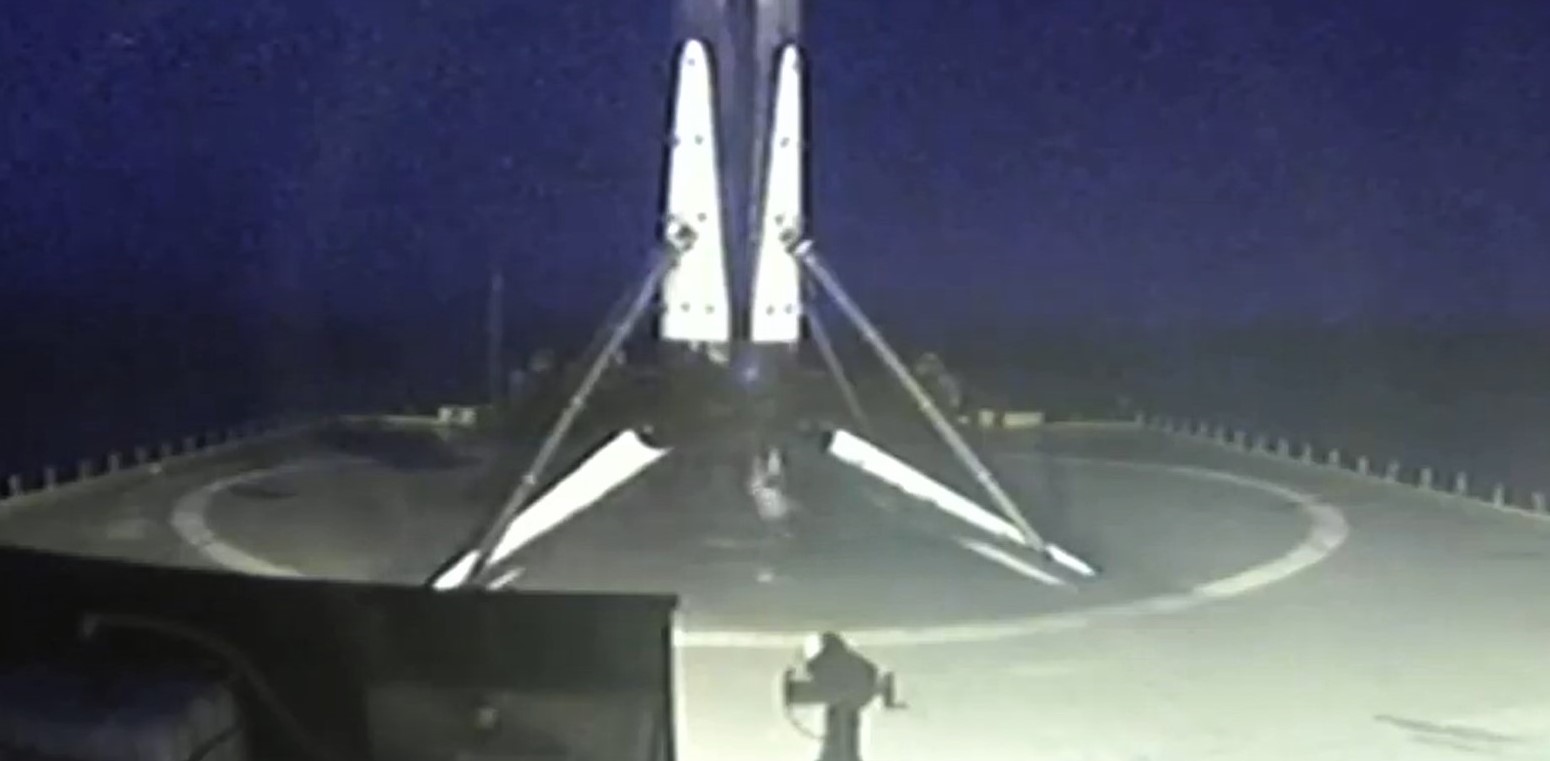
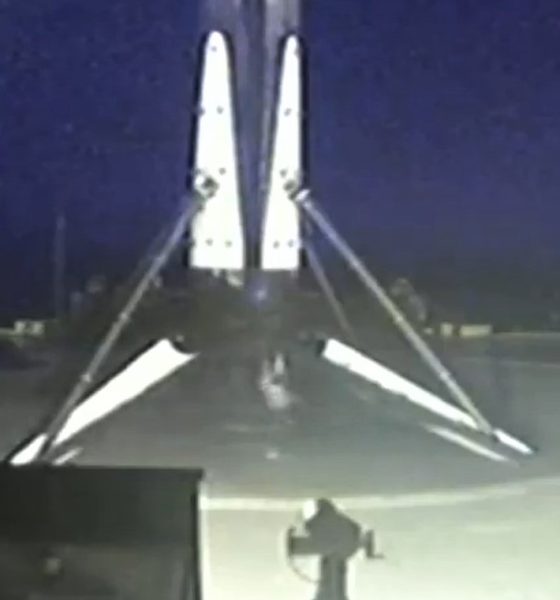
News
SpaceX launches tenth Starlink mission, nails booster’s fifth landing
Bringing more than six weeks of delays to a welcome end, SpaceX has – for the second time ever – successfully launched and landed the same Falcon 9 booster five times, sending a stack of Starlink satellites and two rideshare payloads on their way to orbit.
At 1:12 am EDT (05:12 UTC) on Friday, August 7th, Falcon 9 booster B1051, a fresh upper stage and payload fairing, 57 Starlink v1.0 satellites, and two BlackSky Earth imaging spacecraft successfully lifted off. Around nine minutes after departing Kennedy Space Center (KSC) Launch Complex 39A, better known as Pad 39A, booster B1051 completed a gentle landing aboard drone ship Of Course I Still Love You (OCISLY).
Located some 630 km (~390 mi) downrange, this was the fourth time the SpaceX drone ship had departed Florida’s Port Canaveral in support of Starlink V1 L9 (Starlink-9) launch attempts. Thankfully, especially for the recovery teams tasked with repeatedly sailing out and back empty-handed, B1051’s fifth successful landing brings that wild goose chase to an end.
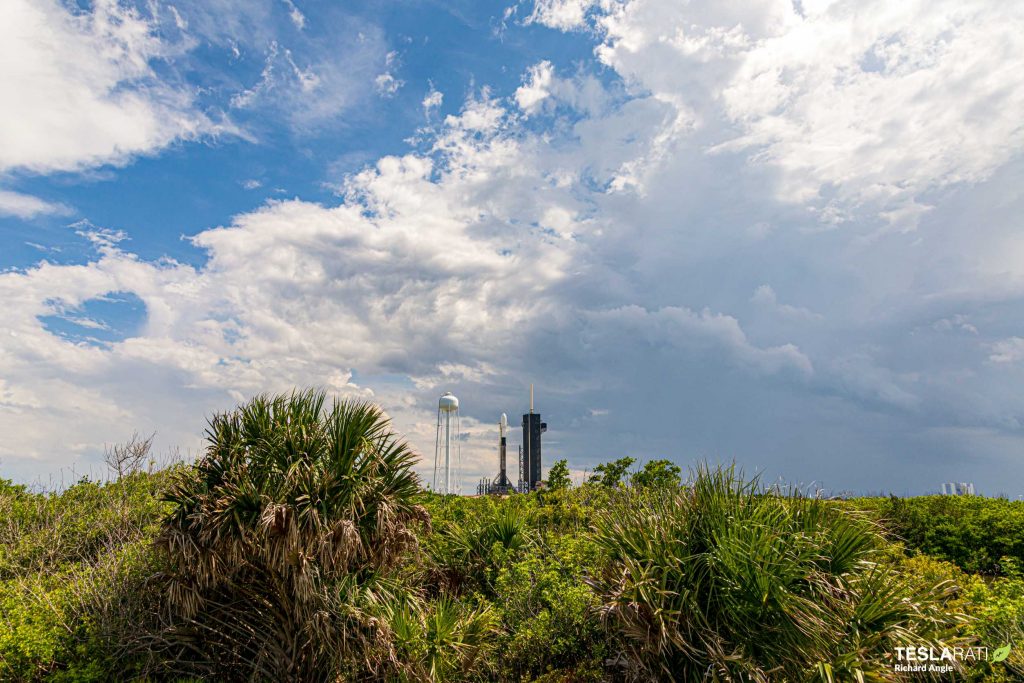
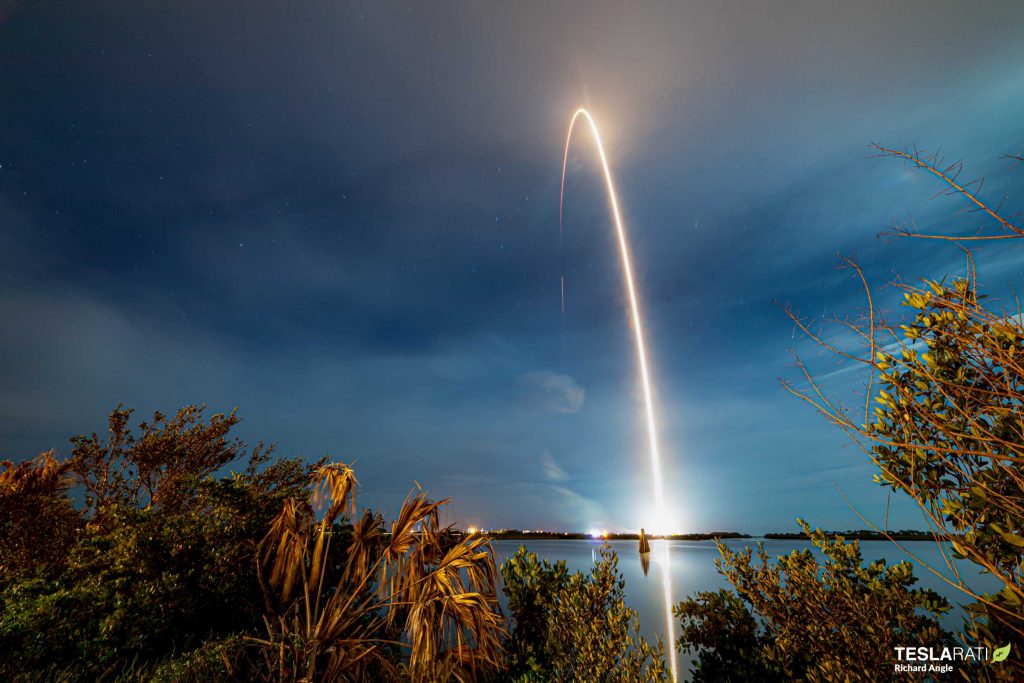
Around 45 minutes after launch, a SpaceX engineer and webcast host revealed that the company was, unfortunately, unable to complete two back-to-back Falcon 9 fairing catches, although recovery ships Ms. Tree and Ms. Chief should still be able to fish the Starlink-9 halves out of the water. About an hour after liftoff, Falcon 9’s upper stage successfully deployed both BlackSky rideshare payloads and followed that up with the successful deployment of 57 new Starlink satellites shortly thereafter.
While Starlink-9 was originally scheduled to launch as early as June 23rd, Principal Integration Engineer John Insprucker – a familiar fixture and voice on SpaceX webcasts – was quick to note that through the more than six subsequent weeks of delays, “Falcon 9 has been trouble-free.” He also partially answered the main question on everyone’s mind, noting that all of those delays could be traced back to bad weather and issues with the mission’s payloads.
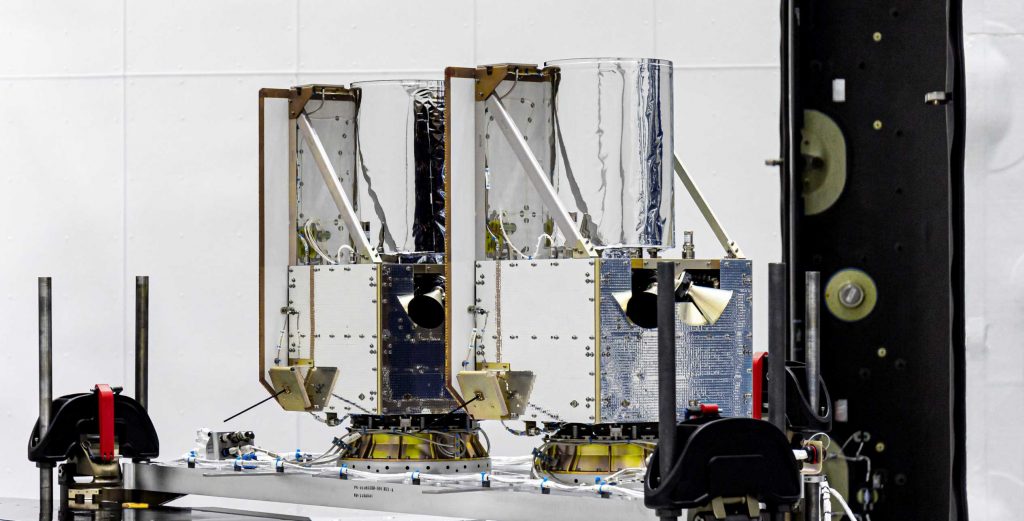
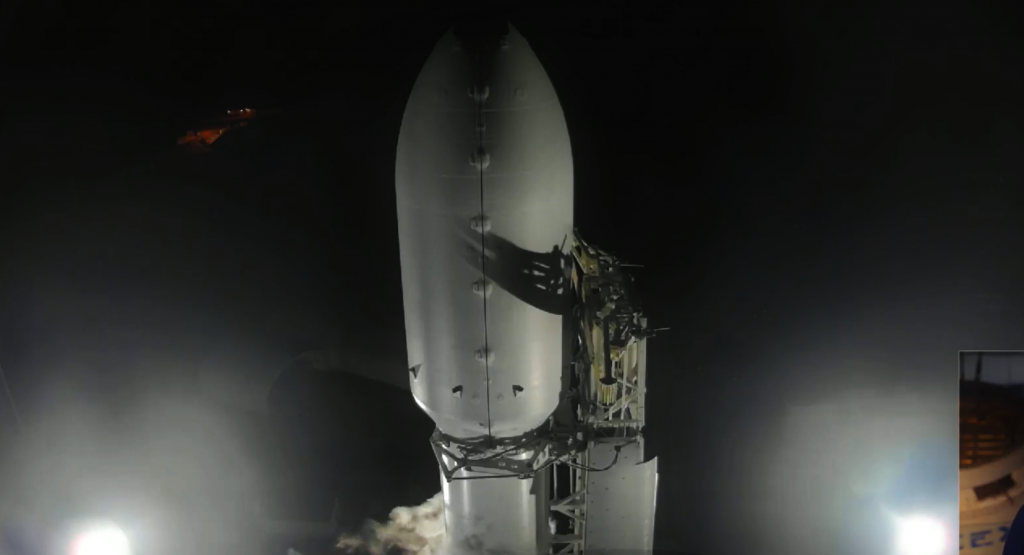
He didn’t specify which payloads, suggesting that it may have primarily been related to BlackSky’s two satellites given that throwing a customer under the bus would be in extremely bad taste for a launch provider. Regardless, SpaceX has finally completed the mission and can now move on to greener Starlink pastures and a number of interesting upcoming missions.
Notably, the next two non-Starlink launches currently on SpaceX’s manifest are SAOCOM 1B – the first polar orbit launch from the East Coast in half a century – and Crew-1 – Crew Dragon’s first operational astronaut launch. Scheduled no earlier than late-August and late-September, respectively, both major customer missions are likely to be punctuated by several Starlink launches over the next two months. With Starlink-9 complete, SpaceX could be just 4-5 missions away from rolling out Starlink internet service according to a comment from COO/President Gwynne Shotwell that service could begin after the 14th Starlink launch.
Check out Teslarati’s Marketplace! We offer Tesla accessories, including for the Tesla Cybertruck and Tesla Model 3.

Elon Musk
Starlink passes 9 million active customers just weeks after hitting 8 million
The milestone highlights the accelerating growth of Starlink, which has now been adding over 20,000 new users per day.

SpaceX’s Starlink satellite internet service has continued its rapid global expansion, surpassing 9 million active customers just weeks after crossing the 8 million mark.
The milestone highlights the accelerating growth of Starlink, which has now been adding over 20,000 new users per day.
9 million customers
In a post on X, SpaceX stated that Starlink now serves over 9 million active users across 155 countries, territories, and markets. The company reached 8 million customers in early November, meaning it added roughly 1 million subscribers in under seven weeks, or about 21,275 new users on average per day.
“Starlink is connecting more than 9M active customers with high-speed internet across 155 countries, territories, and many other markets,” Starlink wrote in a post on its official X account. SpaceX President Gwynne Shotwell also celebrated the milestone on X. “A huge thank you to all of our customers and congrats to the Starlink team for such an incredible product,” she wrote.
That growth rate reflects both rising demand for broadband in underserved regions and Starlink’s expanding satellite constellation, which now includes more than 9,000 low-Earth-orbit satellites designed to deliver high-speed, low-latency internet worldwide.
Starlink’s momentum
Starlink’s momentum has been building up. SpaceX reported 4.6 million Starlink customers in December 2024, followed by 7 million by August 2025, and 8 million customers in November. Independent data also suggests Starlink usage is rising sharply, with Cloudflare reporting that global web traffic from Starlink users more than doubled in 2025, as noted in an Insider report.
Starlink’s momentum is increasingly tied to SpaceX’s broader financial outlook. Elon Musk has said the satellite network is “by far” the company’s largest revenue driver, and reports suggest SpaceX may be positioning itself for an initial public offering as soon as next year, with valuations estimated as high as $1.5 trillion. Musk has also suggested in the past that Starlink could have its own IPO in the future.
News
NVIDIA Director of Robotics: Tesla FSD v14 is the first AI to pass the “Physical Turing Test”
After testing FSD v14, Fan stated that his experience with FSD felt magical at first, but it soon started to feel like a routine.

NVIDIA Director of Robotics Jim Fan has praised Tesla’s Full Self-Driving (Supervised) v14 as the first AI to pass what he described as a “Physical Turing Test.”
After testing FSD v14, Fan stated that his experience with FSD felt magical at first, but it soon started to feel like a routine. And just like smartphones today, removing it now would “actively hurt.”
Jim Fan’s hands-on FSD v14 impressions
Fan, a leading researcher in embodied AI who is currently solving Physical AI at NVIDIA and spearheading the company’s Project GR00T initiative, noted that he actually was late to the Tesla game. He was, however, one of the first to try out FSD v14.
“I was very late to own a Tesla but among the earliest to try out FSD v14. It’s perhaps the first time I experience an AI that passes the Physical Turing Test: after a long day at work, you press a button, lay back, and couldn’t tell if a neural net or a human drove you home,” Fan wrote in a post on X.
Fan added: “Despite knowing exactly how robot learning works, I still find it magical watching the steering wheel turn by itself. First it feels surreal, next it becomes routine. Then, like the smartphone, taking it away actively hurts. This is how humanity gets rewired and glued to god-like technologies.”
The Physical Turing Test
The original Turing Test was conceived by Alan Turing in 1950, and it was aimed at determining if a machine could exhibit behavior that is equivalent to or indistinguishable from a human. By focusing on text-based conversations, the original Turing Test set a high bar for natural language processing and machine learning.
This test has been passed by today’s large language models. However, the capability to converse in a humanlike manner is a completely different challenge from performing real-world problem-solving or physical interactions. Thus, Fan introduced the Physical Turing Test, which challenges AI systems to demonstrate intelligence through physical actions.
Based on Fan’s comments, Tesla has demonstrated these intelligent physical actions with FSD v14. Elon Musk agreed with the NVIDIA executive, stating in a post on X that with FSD v14, “you can sense the sentience maturing.” Musk also praised Tesla AI, calling it the best “real-world AI” today.
News
Tesla AI team burns the Christmas midnight oil by releasing FSD v14.2.2.1
The update was released just a day after FSD v14.2.2 started rolling out to customers.

Tesla is burning the midnight oil this Christmas, with the Tesla AI team quietly rolling out Full Self-Driving (Supervised) v14.2.2.1 just a day after FSD v14.2.2 started rolling out to customers.
Tesla owner shares insights on FSD v14.2.2.1
Longtime Tesla owner and FSD tester @BLKMDL3 shared some insights following several drives with FSD v14.2.2.1 in rainy Los Angeles conditions with standing water and faded lane lines. He reported zero steering hesitation or stutter, confident lane changes, and maneuvers executed with precision that evoked the performance of Tesla’s driverless Robotaxis in Austin.
Parking performance impressed, with most spots nailed perfectly, including tight, sharp turns, in single attempts without shaky steering. One minor offset happened only due to another vehicle that was parked over the line, which FSD accommodated by a few extra inches. In rain that typically erases road markings, FSD visualized lanes and turn lines better than humans, positioning itself flawlessly when entering new streets as well.
“Took it up a dark, wet, and twisty canyon road up and down the hill tonight and it went very well as to be expected. Stayed centered in the lane, kept speed well and gives a confidence inspiring steering feel where it handles these curvy roads better than the majority of human drivers,” the Tesla owner wrote in a post on X.
Tesla’s FSD v14.2.2 update
Just a day before FSD v14.2.2.1’s release, Tesla rolled out FSD v14.2.2, which was focused on smoother real-world performance, better obstacle awareness, and precise end-of-trip routing. According to the update’s release notes, FSD v14.2.2 upgrades the vision encoder neural network with higher resolution features, enhancing detection of emergency vehicles, road obstacles, and human gestures.
New Arrival Options also allowed users to select preferred drop-off styles, such as Parking Lot, Street, Driveway, Parking Garage, or Curbside, with the navigation pin automatically adjusting to the ideal spot. Other refinements include pulling over for emergency vehicles, real-time vision-based detours for blocked roads, improved gate and debris handling, and Speed Profiles for customized driving styles.








